The beaches being blown away by extreme storms
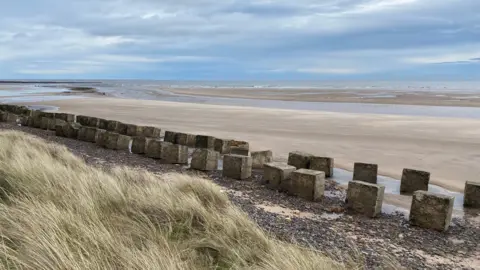 BBC
BBC High tides and winter storms have caused a stretch of coastline to retreat by several metres in places.
It has left a number of paths on to Northumberland beaches hanging in the air, and revealed World War Two defences not seen for generations.
The erosion has prompted the coastguard to urge people to stay away from cliff edges.
Howick station officer Ian Woods said: "We've seen dunes collapse, as well as landslides all along the coast."
“It's really important people keep their dogs on leads too, because you may think there's rock underneath, but some of the cliffs are really unstable," he added.

Alnmouth is one of the most popular tourist destinations in Northumberland.
Gerry McBride, chair of the Burgage Holders of Alnmouth Common, said: "It's a beautiful beach but parts of it have changed for the worse."
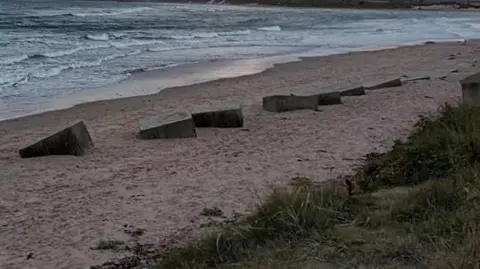
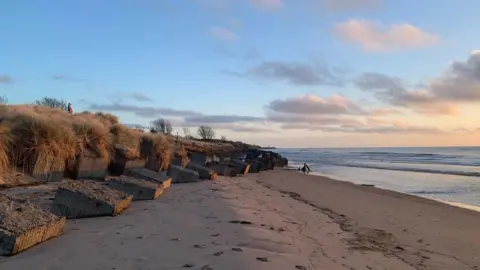 Kevin Holden
Kevin Holden A double row of World War Two tank traps, previously partially or completely buried in the dunes, has become completely exposed, along with piles of rubble.
"We installed a walkway onto the beach at a cost of several thousand pounds and it's been damaged twice by these huge tides and we are unlikely to try and repair it in the short term," Mr McBride said.
The area near the boathouse had also been damaged, making it very difficult for the local rowing club to launch their boats, he added.
"Older people in the village have seen many changes over the years and the tank traps have been exposed before, but it does feel like this is a different trend," he said.
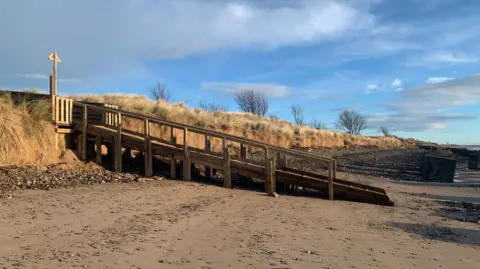 Kevin Holden
Kevin Holden 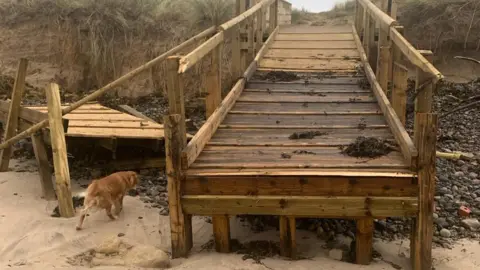 Kevin Holden
Kevin Holden World War Two tank traps have also become visible at Seahouses.
Jane Dixon runs Seashore Safari activities, and visits North Beach daily.
She said the beach had been washed out by easterly storms, taking approximately 10ft (three metres) off the front of the sand dunes, which revealed a huge line of traps.
"I hope the sand might be blown back, but I don't think it'll be a quick process," she added.
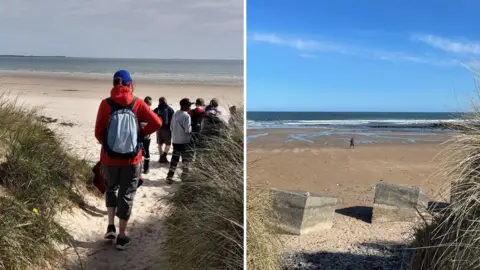 Jane Dixon
Jane DixonSally Cook runs Surf Northumberland and gives surf lessons along the coast, from Druridge Bay to Bamburgh.
"All along the coast there have been these huge changes to the beaches," she explained.
"Paths that used to lead to the beach now have a one- or even two-metre drop."
Ms Cook said she had to risk assess every surfing group so she could get them safely onto the beach.
"The changes are quite staggering," she added.
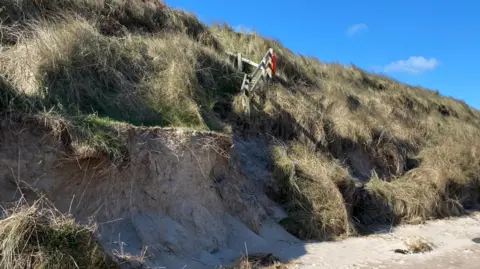
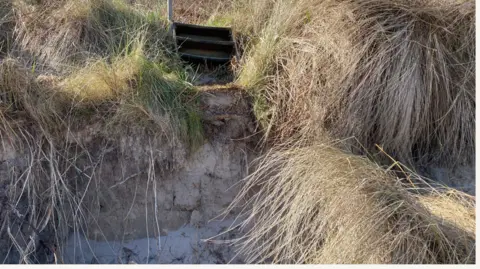
For those with coastal properties, the erosion brings the sea ever closer.
Jim Watt, has a caravan at Seaton Point, south of Boulmer.
"When I first got this place, the cliff was much further out," he said.
"There were no steps down to the beach, because they weren't needed."

A report published in 2022 suggested up to a thousand coastal homes could be lost to climate change along the Northumberland coast by 2050.
Prof Andy Shepherd, from Northumbria University, is the Director of the Centre for Polar Observation and Monitoring, which provides the UK with information about how ice, oceans, and climate are changing.
He believes climate change might be part of the explanation for the alterations to the Northumberland coast this winter.
 Andy Shepherd
Andy Shepherd "There are definitely studies that relate increased sea level rise to coastal erosion," Prof Shepherd said.
"The effects of climate change have been increasing during the 20th Century and they're now affecting us in real time."
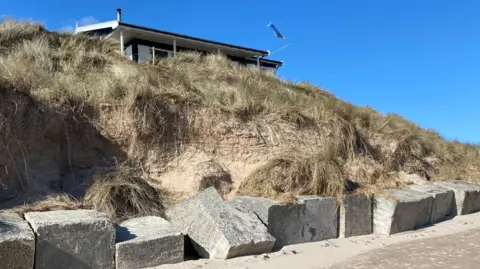
The UK has just experienced the warmest February on record, which was also one of the wettest.
"Increased rainfall causes more cliff instability, and they're more likely to collapse if they're hit by waves and we know that climate warming causes more storms," Prof Shepherd explained.
"The progressive move of our coastline inland is definitely related to sea level rise and it is inevitable that we will lose some of our beaches, because it is happening too quickly for our landscapes to evolve."
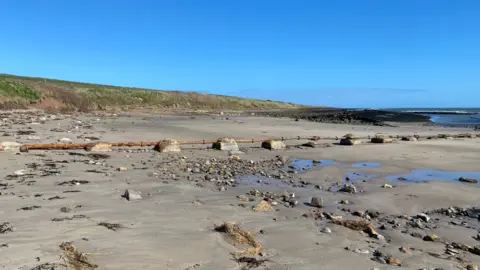
Follow BBC North East on X (formerly Twitter), Facebook and Instagram. Send your story ideas to [email protected].
